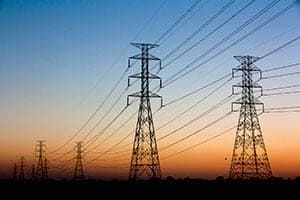A new study by Zhi Da, Viola D. Hank Associate Professor of Finance at the University of Notre Dame, shows that the growth rate in industrial electricity usage negatively predicts next one-year stock market returns.
“For example, if the industrial electricity usage this month is one percent lower than that in the same month last year, we predict the stock market return to be 0.92 percent higher in the next year,” Da said.
The negative correlation supports the notion of “counter-cyclical risk premium.”
“Counter-cyclical risk premium says that people generally require higher return to undertake risky investment during bad times such as recession,” Da said. “Industrial usage of electricity turns out to be a good business cycle indicator, which is why it predicts stock return better. First, due to technological limitations, electricity cannot be easily stored. As a result, industrial electricity usage can be used to track production and output in real time. Second, not all industrial sectors are created equal, and industrial electricity usage happens to track the output of the very cyclical sectors, such as steel and machinery, making it particularly powerful for predicting stock return.”
Investors can use industrial electricity usage as a real-time stock market return predictor and use it to improve their asset allocation decision.
“For example, when industrial electricity usage declines sharply this month, relative to the same month last year, a higher stock market return is predicted and the investors could take advantage of this prediction by shifting some of their investments from bond to stock, a practice commonly known as market timing,” Da said.
Although the current study addresses electricity usage and stock market performance, Da points out that the methodology used can uncover correlations between other measures and stock performance.
“The notion of counter-cyclical risk premium suggests that any other good business cycle measures should also predict stock market performance,” he said. “We study several such measures based on the industrial production in our paper. Compared to these well-known business cycle indicators, which may take several months before they are announced, the electricity usage data is available in almost real time.”
The study appears in the Journal of Financial and Quantitative analysis. It can be viewed here.
If our reporting has informed or inspired you, please consider making a donation. Every contribution, no matter the size, empowers us to continue delivering accurate, engaging, and trustworthy science and medical news. Independent journalism requires time, effort, and resources—your support ensures we can keep uncovering the stories that matter most to you.
Join us in making knowledge accessible and impactful. Thank you for standing with us!

